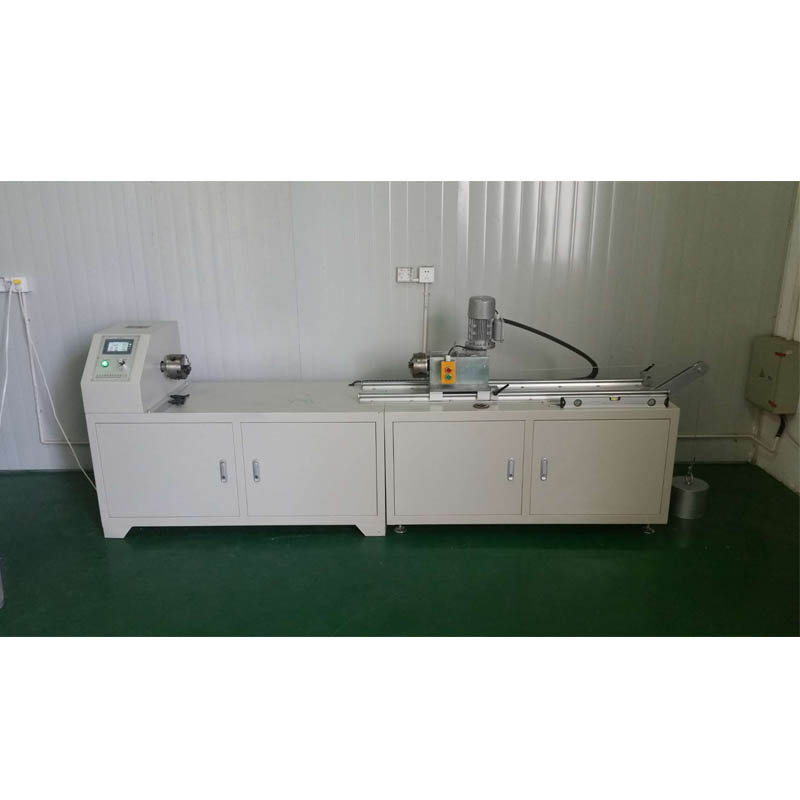tensile tester fixtures
The Importance of Tensile Tester Fixtures in Material Testing
In the modern manufacturing landscape, the importance of material testing cannot be overstated. Industries ranging from aerospace to construction rely heavily on the integrity and durability of materials. One of the primary methods used to assess the strength and performance of materials is tensile testing. Central to this process are tensile tester fixtures which play a crucial role in ensuring accurate and reliable test results.
Understanding Tensile Testing
Tensile testing is a method used to evaluate the mechanical properties of materials under tension. The test involves applying a controlled tensile load to a specimen until it fractures. By measuring the force applied and the resulting elongation, engineers can determine critical properties such as yield strength, ultimate tensile strength, elongation, and modulus of elasticity. These properties are vital for material selection, quality control, and product development.
The Role of Fixtures in Tensile Testing
Fixtures play an essential role in tensile testing as they securely hold the specimen in place during the experiment. Properly designed fixtures minimize the risk of slippage or misalignment, ensuring that the loads applied are uniform and accurate. Each type of material and geometry may require a specific type of fixture, making it essential to choose the right one for the task at hand.
Types of Tensile Tester Fixtures
1. Gripping Fixtures The most common type of tensile tester fixture is the gripping fixture. These are designed to hold the test specimen without causing any damage to the material. Common designs include wedge grips, pneumatic grips, and serrated grips. Each grip type has its advantages depending on the material being tested. For example, serrated grips are effective for soft materials, while wedge grips work well for harder specimens.
2. End Stop Fixtures End stop fixtures are often used in conjunction with gripping fixtures. They help prevent the specimen from shifting during a test. By providing a stable endpoint, these fixtures enable more accurate measurements, especially in materials that exhibit elongation or necking.
tensile tester fixtures

3. Custom Fixtures In some instances, standard fixtures may not be suitable for unique specimens. Custom fixtures can be designed to accommodate specific shapes or sizes, ensuring that every test is precise. These may include fixtures for thin sheets, wires, or awkwardly shaped components.
Importance of Proper Fixture Design
The design of tensile tester fixtures is paramount for the success of a tensile test. Poorly designed fixtures can lead to inaccurate results, which can have significant repercussions. For instance, if a material slips during the test, it may appear weaker than it truly is, leading to improper material selection for critical applications. On the other hand, a fixture that damages the specimen can cause premature failure, skewing the test data. Thus, careful consideration must be given to the selection and design of fixtures.
Technological Advancements in Fixture Design
Recent advancements in technology have revolutionized the design of tensile tester fixtures. The introduction of materials such as high-strength alloys and polymers has enhanced the durability and performance of these fixtures. Additionally, computer-aided design (CAD) tools allow for precise modeling and testing of fixture designs before they are fabricated, ensuring optimal performance.
Moreover, the integration of digital measurement tools can enhance the accuracy of tensile testing. Data acquisition systems can provide real-time data on the performance of the fixture and the specimen, allowing engineers to analyze results dynamically.
Conclusion
Tensile tester fixtures are a critical component in the field of materials testing. Their design and functionality can significantly impact the outcome of tensile tests, which in turn influence material selection and product integrity. As technology advances, the capability and precision of these fixtures are expected to improve, leading to more reliable and efficient testing processes. For engineers and manufacturers, investing in high-quality fixtures is not just a choice but a necessity for ensuring the safety and performance of their products in the real world.
-
The Role of Tensile Force Testers in Quality Control and Material Science
NewsAug.01,2025
-
Maintenance and Safety Tips for Aging Ovens
NewsAug.01,2025
-
Density Balance in Forensic Science
NewsAug.01,2025
-
Advanced Optical Measurement Technologies
NewsAug.01,2025
-
A Buyer’s Guide to Tensile Test Machines
NewsAug.01,2025
-
Why the Conductor Resistance Constant Temperature Measurement Machine Redefines Precision
NewsJun.20,2025
 Copyright © 2025 Hebei Fangyuan Instrument & Equipment Co.,Ltd. All Rights Reserved. Sitemap | Privacy Policy
Copyright © 2025 Hebei Fangyuan Instrument & Equipment Co.,Ltd. All Rights Reserved. Sitemap | Privacy Policy
